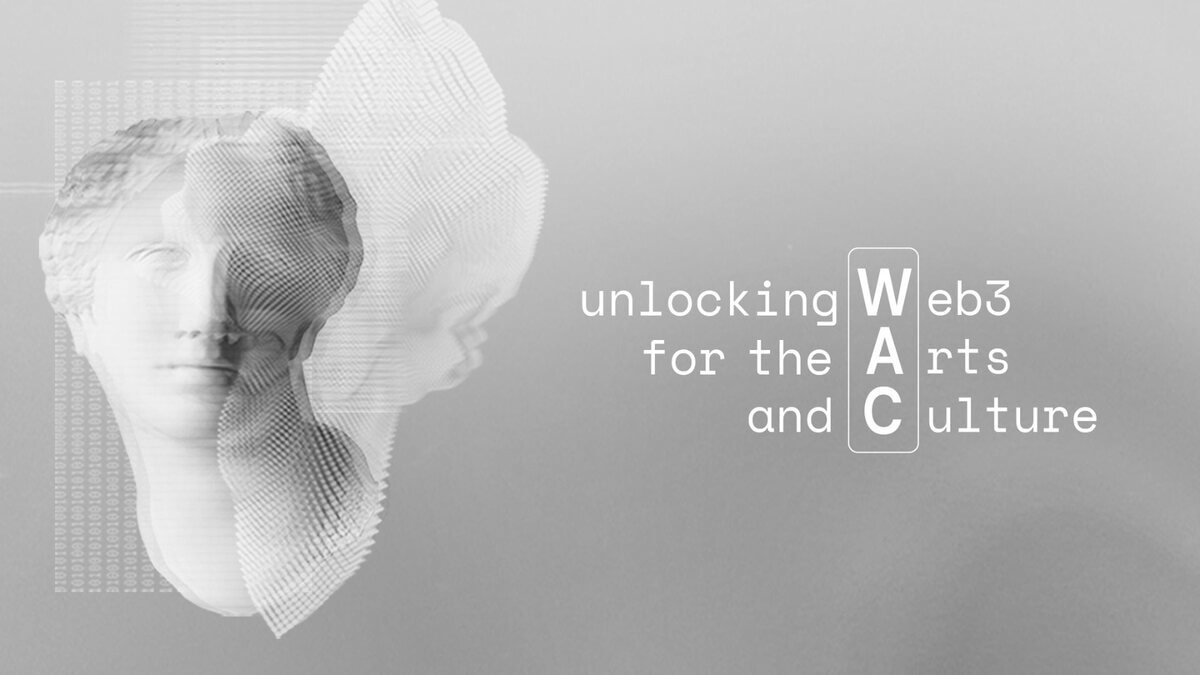The WAC Fellowship empowers cultural institutions with blockchain innovation

[gpt3]rewrite
The Web3 for the Arts and Culture (WAC) Fellowship, supported by the Tezos Foundation and led by We Are Museums, has completed its second 6-month Innovation Lab. Twelve prestigious cultural institutions globally explored blockchain-based projects, improved cultural preservation, social good and financial stability. Join the demo day on May 25 to see the results and learn how Web3 is revolutionizing art.
The Web3 for the Arts and Culture (WAC) Fellowship, supported by the Tezos Foundation and led by We Are Museums, in collaboration with LAL Art, has successfully completed its second 6-month Innovation Lab.
Twelve prestigious cultural institutions from around the world have explored and prototyped blockchain-based projects, expanding their capabilities in cultural preservation, social good, environmental justice and financial stability.
The results are presented by the cultural institutions during the Demo Day on 25 May (online).
After the 3-month weekly discussions WAC WEEKLYhas the 4-month online program educated and brought these institutions to Web3 with a comprehensive training and mentoring program.
It covered blockchain’s role in the cultural sector, its impact on identity, security, legal and social implications, gaming, metaverse, Web3 communication and community building.
In total, the fellows had access to 25 trainers, 50 mentors, 35 lessons, 10 practical challenges and 15 case studies.
After intensive training, each team collaborated with a technical integrator and – supported by blockchain and UI/UX experts – they dedicated the last month of the program to prototyping and developing blockchain applications for the art world.
“The WAC Fellowship is at the forefront of a cultural metamorphosis, empowering institutions to harness the enormous potential of blockchain technology,” said Diane Drubay, founder of We Are Museums and WAC-Lab.
Among the innovative projects developed by the fellows, HEK – House of Electronic Arts has developed the “HEK NFT Shop” with support from Smartchain. Soon HEK will release its second NFT issue with Leander Herzog to celebrate the new “HEK NFT Shop”.
This is the first step in a new web3 journey for HEK, including more collaborations with artists, a tokenized museum membership and a future DAO.
Wooko Makandie Foundation uses Tezos-based fx(hash) to recreate traditional pangi prints as generative art. This project offers a new way to experience traditional art via technology and promote engagement with a wider audience.
This autumn, the Musée d’Orsay will experiment with a new type of merchandising where visitors will be able to collect a digital souvenir from their visit. This will be the museum’s first step towards web3 community building through visitor engagement in the chain and potentially new income streams.
ArtAegis, with the National Taras Shevchenko Museum and Kyiv’s Department of Culture, is using Lucify for augmented reality art exhibitions to exhibit wartime Ukrainian art with their “Anywhere Museum” at a time when museums are empty or closed, allowing people to use AR and blockchain to access culture again.
Two Royal College of Art fellows are exploring how to increase community engagement in impact-driven projects and performance art with web3 using the Tezos-based platform fx(hash):
Lena Dobrowolska’s Future News NFT project focuses on the co-creation of speculative climate-themed newspaper covers through a live workshop. All profits from NFT sales will help climate justice organizations and climate negotiators from the Global South. In collaboration with Davide Ciacco, it culminates at the FOTODOKS Festival Munich.
Anna Nazo explores web3 AI-Neurotech performance art with visitor participation in virtual environments, using 360-degree imaging that is turned into generative NFTs. The project has been developed in collaboration with the New Art City virtual gallery.
The Berlin Institute for Sound and Music launches SUPERPOSITION, a blockchain service for art and culture. This initiative aims to launch an annual digital art donation campaign for urgent charitable causes. Leveraging royalties from future digital asset transactions, they demonstrate the impact of art and advanced technology while supporting charitable endeavors.
The Museum of Modern and Contemporary Art Sri Lanka plans to reward learning about modern and contemporary art in Sri Lanka and best practices for museum communicators, with the Naan wallet’s “Proof-of-Learning” tokens. This will provide a unique way to stimulate and recognize learning.
The WAC grantees from the French Ministry of Culture, in collaboration with Smartchain, write an exploratory note on the (im)permanence of artist royalties and explore ways to use the potential of blockchain technology to secure sources of income for artists in the dynamic art market.
This note will be accompanied by a day of round tables in the Ministry of Culture with players in the arts and Web3 space to move forward.
During the fellowship, projects as part of the WAC Factory were developed, while other fellows followed long-term initiatives. The Australian Center for the Moving Image (ACMI) in Melbourne is conducting research for their future in-house web3 experience.
They will publish their findings and use the knowledge to scale the organization, create internal advocacy and prepare for their upcoming web3 exhibition.
Haus der Kunst in Munich is building community engagement in collaboration with a digital artist for an upcoming festival this summer, and the Belvedere Museum in Vienna is exploring Web3 solutions and training staff based on community learning.
“We are excited to see the impact this program has had on the participating institutions and how the teams involved in the community continue their journey, further train their own teams and collaborate on new projects…” adds Fanny Lakoubay, Partner at WAC Lab and founder of LAL ART.
Using the Tezos blockchain’s security and transparency, technology integrators have developed innovative solutions such as generative art mechanisms and DAO-powered voting tools that enrich visitor experiences, promote collaboration across museums and diversify revenue streams, while expanding the open source toolkit for Tezos-based Innovation.
“The success of the WAC Fellowship program highlights the museum world’s commitment to being a positive force in web3 innovation,” says Valérie Whitacre, Art Director, TriliTech / Tezos.
As the art world continues to evolve, the WAC Fellowship Program provides essential guidance to cultural institutions looking to navigate the Web3 space and use innovative tools to achieve their goals and build a sustainable future. Watch out for Season 3 of WAC Lab!
Register here to join the demo day on 25 May at 10.00 CEST
Also read: International Museum Day: How is Blockchain transforming the art world?
This article first appeared on XTZ.news. Source link here.
[gpt3]

























